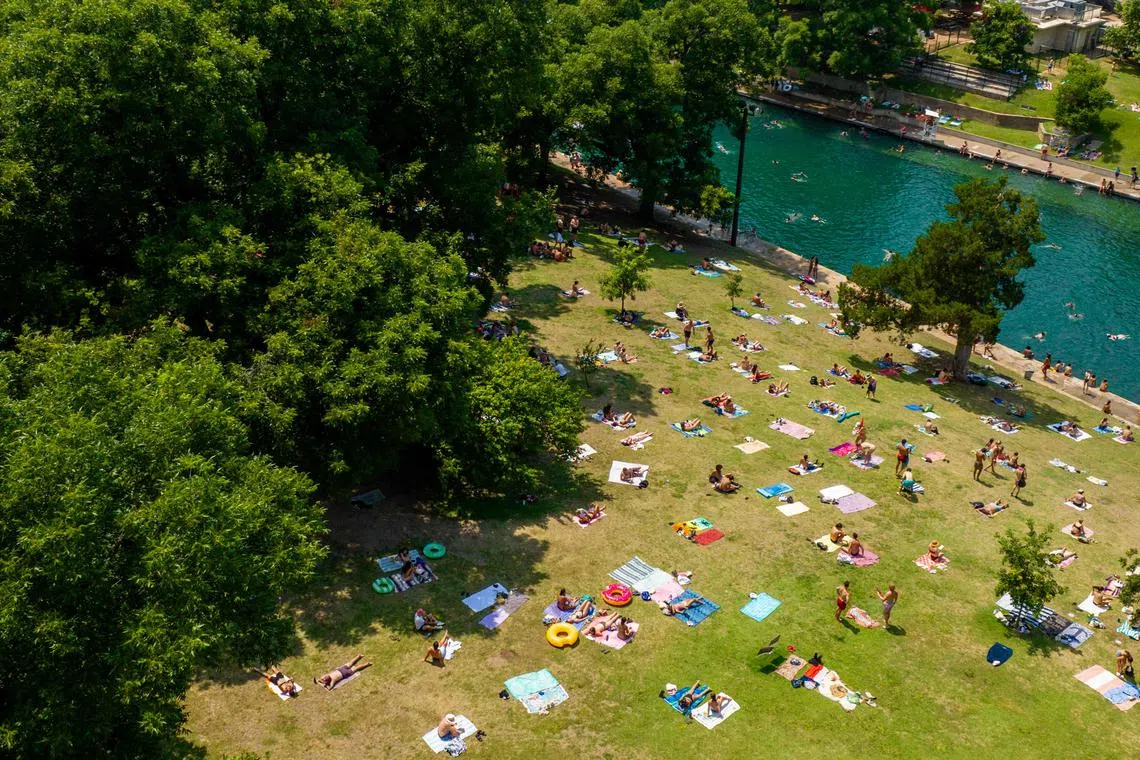US teen and stepfather die on hike in near-record 48.3 deg C Texas heat
Sign up now: Get ST's newsletters delivered to your inbox

The dangerous early-summer heat wave has broken daily temperature records across Texas.
PHOTO: AFP
Follow topic:
TEXAS - A teenage boy and his stepfather hiking in Big Bend National Park in Texas died as temperatures there rose to 48.3 deg C on Friday – the second-highest reading ever recorded in the state – during a heat wave that was forecast to spread to the south-east this week.
“We are in extreme heat right now,” said Mr Thomas VandenBerg, a park ranger at Big Bend, near the United States border with Mexico, where another hiker recently died of heat-related causes.
The dangerous early-summer heat wave has broken daily temperature records across Texas and strained the state’s independent power grid. In Oklahoma, the heat scorched a state battered by storms that left tens of thousands, mostly in the Tulsa area, without electricity for much of last week.
By Monday, most power had been restored and temperatures had dropped, but they were expected to climb again later this week.
A stubborn “heat dome” of high pressure has kept the heat index – an indication of how hot the air actually feels, taking into account humidity – high across much of Oklahoma and Texas for days.
The system is forecast to shift slowly to the east during the week, extending the brutally hot weather to Louisiana, Mississippi and Alabama.
Forecasters say the pattern could continue through the Fourth of July holiday.
The afternoon high of 48.3 deg C in the Big Bend area on Friday came close to the state’s record of 48.9 deg C, which was first recorded in 1936 and equalled in 1994, according to the National Oceanic and Atmospheric Administration.
The man was hiking in Big Bend with his two stepsons in the late afternoon on Friday, park officials said in a statement, when the younger stepson, who was 14, lost consciousness. His brother, 21, tried to carry the boy back to the trailhead while the stepfather rushed to his vehicle to seek help.
By the time park rangers and Border Patrol agents reached the boy, he had died, officials said. The stepfather, 31, was later found dead in his vehicle, which had crashed over an embankment.
The three had been hiking on the Marufo Vega Trail, which “winds through extremely rugged desert and rocky cliffs within the hottest part of Big Bend National Park”, the officials’ statement said. It added that hikers on the trail did not have access to shade or water, making it “dangerous to attempt in the heat of summer”.
The authorities said the three hikers were from Florida, but did not give their names. The 21-year-old who survived has returned home, officials said on Monday.
Several other hikers have succumbed to extreme heat in the US in recent years.
The death of two experienced hikers and their one-year-old daughter in the Sierra National Forest of California in 2021 confounded investigators for two months, until officials determined that they had died from the effects of heat stroke and possible dehydration
Last July, a 22-year-old man died, reportedly of heat exhaustion, after he ran out of water while hiking in the Badlands of South Dakota. In September, another hiker died, and five more were rescued after suffering from extreme heat in Arizona. In April, a man died on a hiking trail in Lakeside, California, after suffering symptoms of heat exhaustion.
The recent heat has been dangerous in cities, too. Ambulance crews in the Tulsa region experienced their highest daily call volume last week, a spokesman said. And the Dallas medical examiner’s office is investigating whether the heat played a role in the death of a 66-year-old postal worker who collapsed last week during an excessive heat warning.
While tying a single heat wave to climate change requires analysis, scientists have no doubt that heat waves around the world are becoming hotter, more frequent and longer lasting. The 2018 National Climate Assessment, a major scientific report by 13 federal agencies, noted that the frequency of heat waves in the US jumped from an average of two per year in the 1960s to six per year by the 2010s.

